Solar inverters are made to change DC current voltage from photovoltaic arrays into AC which in turn powers home appliances and some of the utility grids. It is very popular now as electricity cost is rising and helps conserve energy for the future. The solar panels and solar inverter fit together like a kind of puzzle. It is programmed to hook up to a specific no. of solar boards. The cost of the inverter is 10% of the cost of the solar board. But they don’t last as long as solar panels. An adequate no. of solar panels is needed. More or less can affect efficiency.
Post your Requirement
The different types of solar inverters are mentioned below:
-
Stand Alone Solar Inverter
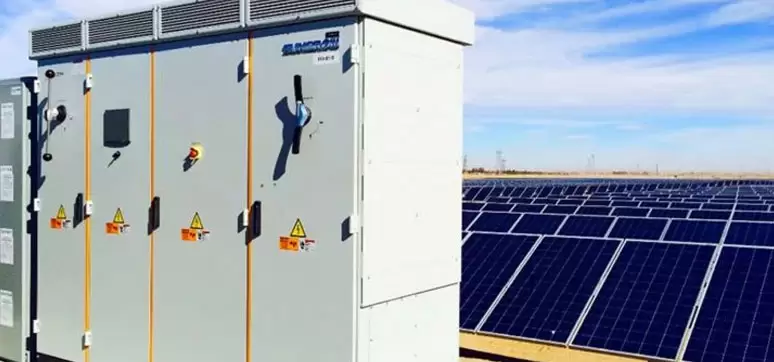
In these, there may be no connection to a solar panel. Photovoltaic batteries are charged directly and get DC power from PV batteries or engine generators or wind or hydro turbines. Some bring together vital battery chargers to refill the battery coming from an AC source wherever this can be done. Also because these inverters are isolated from their utility grids. They don’t require anti-islanding protection. Enquire Now for Solar PanelsStand-alone solar inverter advantages: A stand-alone inverter, also known as an off-grid inverter comes in a variety of sizes and output waveforms. The pure sine inverter is essential for the best output. It is suitable for solar home systems, rural electrification, and village electrification in isolated areas where there is no utility grid.
-
Grid-Tie Inverters
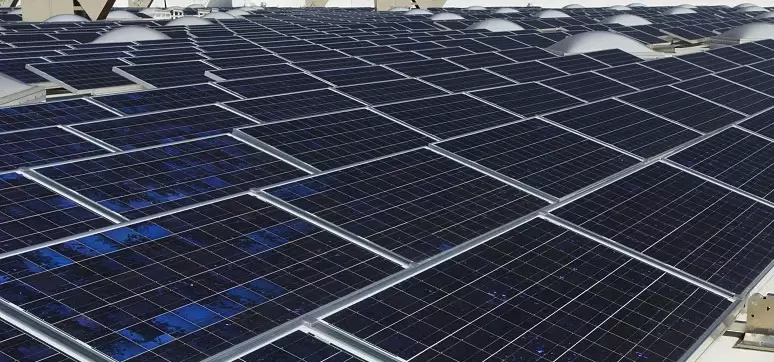
They match the phase along with a utility-charged sign wave. They also turn off during power losses to help with safety. Here, they don’t help during emergencies of this sort. It is good for a home that is powered by a utility grid to take advantage of net metering. The G.T.I is fooled that a utility grid is still functioning even if it is turned off due to load circuits that resonate in the electrical system.
Suggested Read: Solar Energy Advantages And Disadvantages
Grid-tie inverters advantages: It is less expensive. Because it has a cheap cost of equipment and installation, a grid-tied system will allow you to save more money. It does not necessitate the use of batteries, which are typically costly. Furthermore, because there are no batteries, maintenance costs are kept to a minimum. Overall, the grid-connected system is inexpensive to install and maintain.
The grid acts as a virtual battery for you, electricity is a resource that should be used as soon as possible. With a grid-tied system, the entire grid acts as a virtual battery, storing extra electricity temporarily. Because the grid functions as a battery and there is no inefficient battery involved, almost nothing goes to waste in this arrangement. -
String Inverters
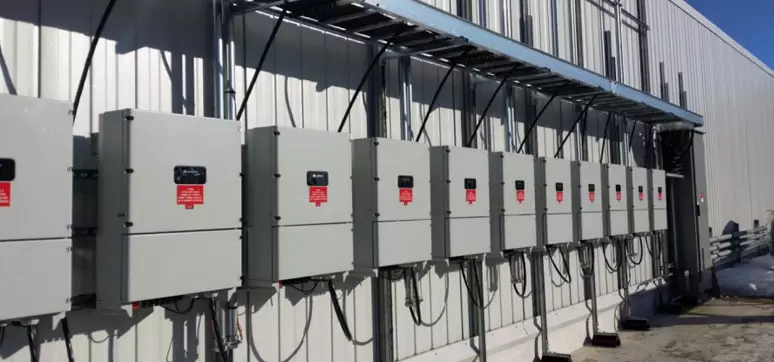
Solar panels are installed in rows, each on a “string”. If you have 25 panels you may have 5 roes of 5 panels. Multiple strings are connected to one string inverter. Each string carries the DC power that the solar panel produces to the string inverter where it’s converted into usable AC power which is then consumed as electricity. Depending on the size of the installation, you may have many string inverters and these would be receiving DC power from a few strings only. String inverters are commonly used in residential and commercial applications. A popular inverter over central inverters in micro utilities. String inverters can also be put together with what you call power optimizers. Power optimizers are module-level powered kinds of electronics. This means that they have to be put in a module-level so that each solar panel has one. P.O offers benefits similar to micro inverters but they happen to be less expensive and so this can be for you a good option between using strictly string inverters or micro-inverters.
Suggested Read: Solar Water Heater Working, Types, Uses And How To Make OneString inverters advantages:
String inverters are the most reliable type of solar inverter because they are the oldest. String inverters have most of the kinks sorted out after decades on the market. They are also the most affordable solar inverter choice.String inverters can also be found on the side of your house or near the side of a ground-mount system. This enables easy monitoring, repair, or replacement of the inverter.
-
Central Inverters

They are similar to string inverters but much larger and can support more strings on the panels. In this type of inverter, instead of many strings running directly to the inverter, the strings are connected together in a common sort of combiner box that runs in the DC power to the central inverter where it is converted to AC power. They are best made for large installations with regular production across the array.Central inverters advantages: This type of inverter has the highest capacity and is most typically utilized in utility-scale systems such as solar farms. Their capacities can range from 100kW to many megawatts. These inverters are often designed to link directly to the electric grid, which is why they are typically packaged with a power station. They also have the advantage of being less expensive per kilowatt and easier to install and manage.
-
Micro Inverters
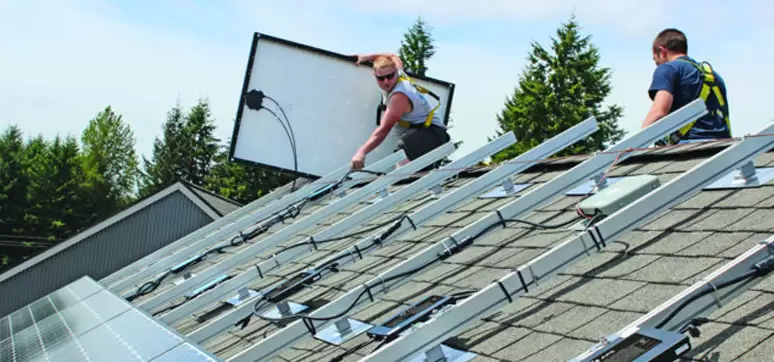
These are good for residential and commercial installation. These also happen to be module-level electronics, therefore each is put in one panel. P.O. though does not convert DC to AC which is done by M.I. right at the panel and so you don’t require a string inverter. Due to the conversion at the panel level if one or two panels are shaded or produce less electrical output than other panels then the other panels continue to still work at their optimal level and remain unaffected. Systems which have micro-inverters can be more efficient, but these often cost more than string inverters.
Micro inverters advantages: The major advantage of micro-inverters is that they are designed to find the ideal voltage for each system and generate the maximum peak power voltage, or Vpp. Maximum Power Point Tracking (MPPT) is a feature that allows the microinverter to track real-time sun intensity and cell temperature as it varies throughout the day. Microinverters provide panel-level monitoring of the solar system, allowing any solar output faults to be diagnosed more easily and precisely.
-
Battery Based Inverter/Chargers
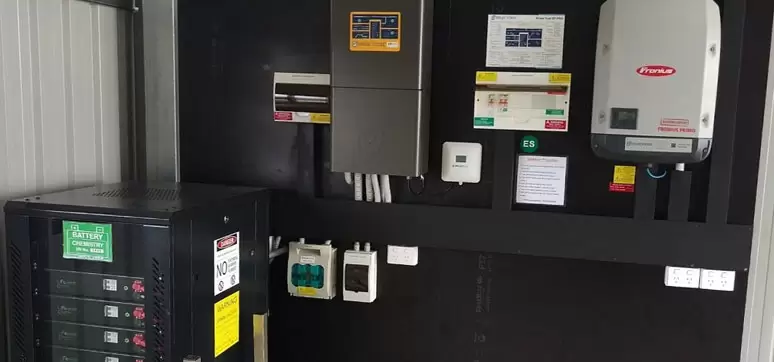
They are becoming more important today. They are bi-directional in nature. They include a battery charger and inverter. They require a battery to work. They can be grid-interactive or stand-alone grid type or off-grid depending on the UL rating and design. So, here we gave you a rough route map of the types of inverters for solar panels available in the market. Have fun comparing and seeing what suits you best.Battery-based inverters advantages:
The main advantage of the battery-based inverter is it reduces grid power consumption and provides continuity in power supply also they provide load management that works better than its counterparts, its operating cost is quite low which makes it affordable and easy to maintain.
Get the best deals on aluminum casement window hinges when you shop the largest online store McCoy Mart, Quality Products, Top Brands, Fast Delivery

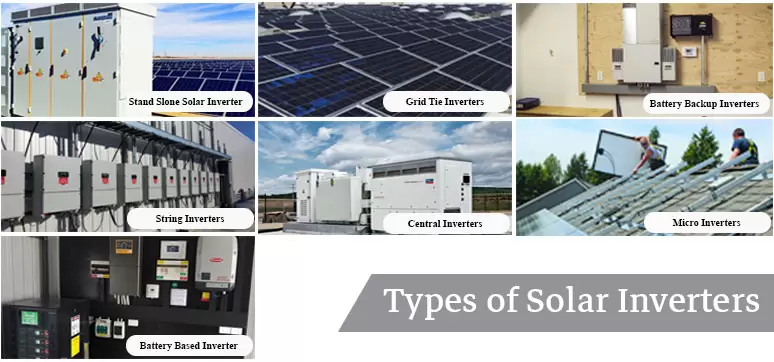
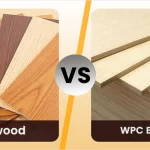
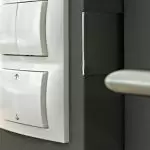
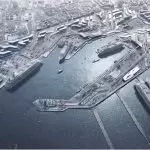


















Post A Comment